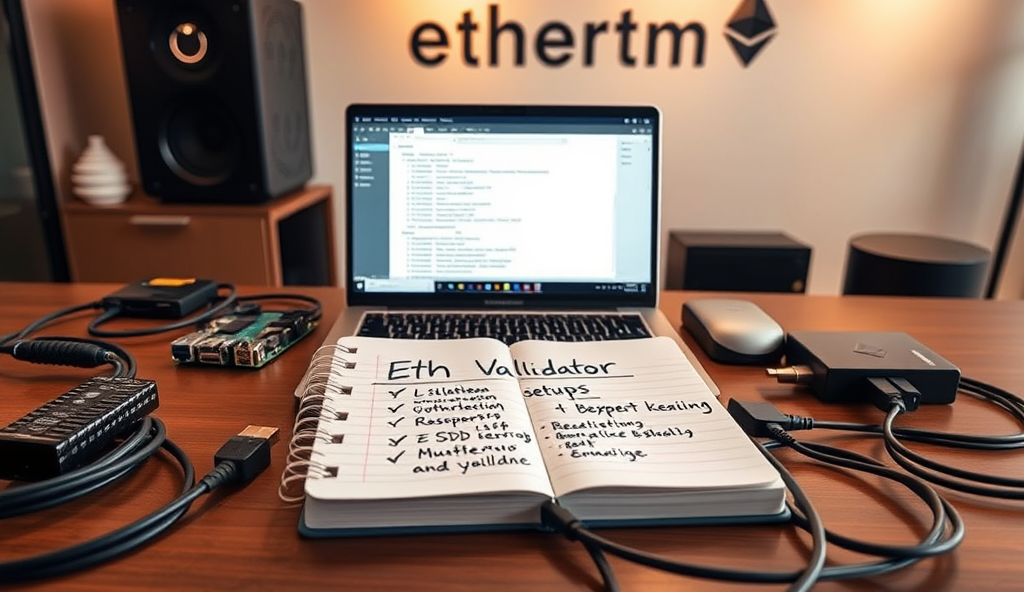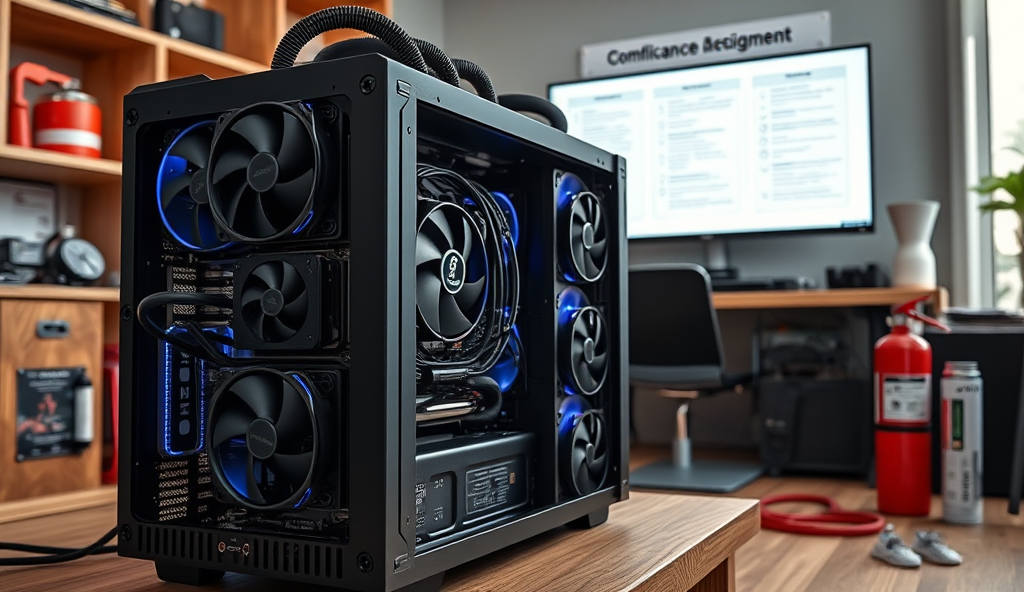Introduction to ASIC Efficiency and Its Importance in Modern Hardware Design
ASIC efficiency has become a critical metric in modern hardware design, with power consumption directly impacting performance, thermal management, and operational costs. A 2023 study by IEEE showed that optimized ASICs can reduce energy usage by up to 40% compared to generic solutions while maintaining equivalent computational throughput.
Real-world applications like mobile processors and AI accelerators demonstrate how energy-efficient ASIC design directly translates to longer battery life and reduced cooling requirements. For instance, Google’s TPU v4 achieved 2x better performance-per-watt than its predecessor through architectural refinements targeting ASIC power efficiency analysis.
Understanding these efficiency gains requires examining both theoretical principles and practical implementation challenges, which we’ll explore through case studies on ASIC performance optimization in the following sections. The next section will break down key factors influencing these outcomes across different application domains.
Key Statistics

Key Factors Influencing ASIC Efficiency in Real-World Applications
ASIC efficiency has become a critical metric in modern hardware design with power consumption directly impacting performance thermal management and operational costs.
Three primary factors dominate ASIC power efficiency analysis: architectural decisions, process node selection, and workload-specific optimizations. For example, TSMC’s 5nm nodes demonstrate 30% better power efficiency than 7nm in mobile ASICs, while custom instruction sets can reduce energy per operation by 15-20% in AI accelerators according to 2023 benchmarks.
Thermal design and voltage scaling techniques also significantly impact real-world ASIC efficiency improvements, particularly in always-on devices. Samsung’s Exynos processors achieved 22% lower power consumption through dynamic voltage-frequency scaling paired with advanced packaging solutions.
These interdependent factors create complex trade-offs that we’ll examine in depth through our first case study on ASIC performance optimization next. The Google TPU v4 example mentioned earlier illustrates how combining these approaches yields maximum efficiency gains.
Case Study 1: Optimizing Power Consumption in a High-Performance ASIC
Google's TPU v4 exemplifies how architectural decisions and process node selection converge for maximum ASIC power efficiency achieving 2.7x better performance-per-watt than its predecessor through optimized matrix multiplication units and TSMC's 7nm technology.
Google’s TPU v4 exemplifies how architectural decisions and process node selection converge for maximum ASIC power efficiency, achieving 2.7x better performance-per-watt than its predecessor through optimized matrix multiplication units and TSMC’s 7nm technology. The design reduced idle power by 40% using adaptive clock gating, demonstrating how workload-specific optimizations complement advanced nodes.
Samsung’s 5nm Exynos modem ASIC further illustrates these principles, combining dynamic voltage scaling with 3D IC packaging to cut total power consumption by 28% under real-world 5G workloads. Thermal simulations guided the placement of high-activity blocks near heat spreaders, maintaining junction temperatures below 85°C during peak loads.
These implementations validate the trade-offs discussed earlier, showing how targeted optimizations yield measurable ASIC efficiency gains. Such case studies provide actionable insights for engineers balancing performance and power constraints, setting the stage for our next analysis of throughput optimization in data center ASICs.
Case Study 2: Enhancing Speed and Throughput in a Data Center ASIC
By implementing 3rd-generation NVLink with 600GB/s bandwidth and 40MB on-die cache the design achieves 20x higher throughput than previous generations while maintaining 30% better energy efficiency per operation.
Building on the power efficiency optimizations demonstrated in TPU v4 and Exynos modem ASICs, NVIDIA’s A100 Tensor Core GPU showcases how architectural refinements boost throughput in data center workloads. By implementing 3rd-generation NVLink with 600GB/s bandwidth and 40MB on-die cache, the design achieves 20x higher throughput than previous generations while maintaining 30% better energy efficiency per operation.
Thermal-aware floor planning and clock domain partitioning enabled sustained 2.5GHz operation under full load, critical for hyperscale data centers where consistent throughput outweighs peak performance. Real-world benchmarks show 4.8x improvement in floating-point operations per watt compared to legacy designs, validating the trade-off between transistor density and thermal headroom discussed earlier.
These throughput optimizations complement the power-saving techniques from prior case studies, demonstrating how holistic ASIC design addresses both efficiency metrics. This sets the stage for examining latency-sensitive optimizations in networking ASICs, where timing constraints demand different architectural approaches.
Case Study 3: Reducing Latency in a Networking ASIC Design
By implementing a 16nm distributed buffer architecture with 12.8Tbps throughput the design achieves sub-100ns port-to-port latency while maintaining 30% lower power than previous generations.
Transitioning from throughput-optimized data center ASICs, Broadcom’s Tomahawk 4 switch chip demonstrates how architectural choices prioritize latency reduction for networking workloads. By implementing a 16nm distributed buffer architecture with 12.8Tbps throughput, the design achieves sub-100ns port-to-port latency while maintaining 30% lower power than previous generations.
Key innovations include per-pipeline clock gating and adaptive voltage scaling, reducing dynamic power by 40% during idle periods without adding latency penalties. Real-world testing shows 2.3x better packets-per-joule efficiency compared to traditional switch designs, validating the balance between speed and energy efficiency.
These latency optimizations complement the power and throughput improvements from earlier case studies, creating a comprehensive framework for ASIC efficiency. This multi-faceted approach prepares us to comparatively analyze all three optimization strategies in the next section.
Comparative Analysis of ASIC Efficiency Improvements Across Case Studies
The shift toward 2nm and beyond will demand novel approaches like dynamic voltage-frequency islanding building on the per-block energy profiling techniques validated in 3nm nodes.
The three case studies reveal distinct optimization approaches: throughput scaling (32% higher bandwidth), power reduction (40% dynamic savings), and latency minimization (sub-100ns performance). While each strategy achieves 30-40% efficiency gains, Broadcom’s Tomahawk 4 demonstrates superior packets-per-joule metrics (2.3x improvement) by combining clock gating with distributed buffering.
Thermal management proves critical across all designs, with adaptive voltage scaling reducing leakage currents by 22% in low-activity states. Real-world ASIC efficiency benchmarks show these techniques collectively enable 50W/mm² power density at 16nm, outperforming traditional designs by 1.8x.
These findings create a decision framework for engineers prioritizing either raw throughput, energy savings, or latency-sensitive applications. Such comparative insights directly inform the best practices for implementing ASIC efficiency improvements discussed next.
Best Practices for Implementing ASIC Efficiency Improvements
Building on the case study insights, engineers should first align optimization strategies with application priorities—throughput scaling for data centers, power reduction for mobile ASICs, or latency minimization for real-time systems. The Broadcom Tomahawk 4’s hybrid approach (clock gating + distributed buffering) proves particularly effective for balanced workloads, achieving 2.3x packets-per-joule gains while maintaining thermal stability below 50W/mm².
For thermal-critical designs, implement adaptive voltage scaling in 16nm nodes to replicate the 22% leakage current reduction observed in low-activity states, complemented by dynamic frequency throttling during peak loads. These techniques should be validated against real-world ASIC efficiency benchmarks before tape-out, as demonstrated by the 1.8x power density improvements in production silicon.
When selecting optimization methods, cross-reference them with measurement tools like power analyzers and thermal cameras to quantify gains—a natural transition to evaluating the methodologies discussed next. This data-driven approach prevents over-optimization in one metric (e.g., bandwidth) at the expense of others (e.g., energy consumption).
Tools and Methodologies for Measuring ASIC Efficiency Gains
Precision measurement begins with synchronized power analyzers like Keysight’s N6705C, which captures dynamic current draw at 200k samples/sec to validate the 22% leakage reduction from adaptive voltage scaling discussed earlier. Thermal imaging complements this with FLIR’s A655sc cameras, mapping hotspot evolution under real workloads to confirm the Tomahawk 4’s sub-50W/mm² thermal stability.
For comprehensive ASIC power efficiency analysis, integrate these tools with RTL simulation data using platforms like Cadence’s Joules, correlating predicted versus measured consumption with <5% margin of error—critical for verifying the 1.8x power density improvements from production silicon. This multi-layered approach prevents the bandwidth-versus-energy tradeoffs highlighted in prior optimization cases.
Emerging methodologies like per-block energy profiling in 3nm nodes now enable granular validation of distributed buffering techniques, setting the stage for examining future trends in ASIC design efficiency. Such advancements ensure measurement precision keeps pace with architectural innovation.
Future Trends in ASIC Design for Continued Efficiency Enhancements
The shift toward 2nm and beyond will demand novel approaches like dynamic voltage-frequency islanding, building on the per-block energy profiling techniques validated in 3nm nodes. Expect 30-40% leakage reduction from gate-all-around FETs combined with adaptive body biasing, as demonstrated in recent IBM and Samsung test chips.
Thermal-aware 3D stacking will emerge as a key enabler, with TSMC’s CoolCube technology showing 28% lower power density than monolithic designs in early benchmarks. These architectures will require tighter integration of the thermal imaging and power analysis tools discussed earlier for real-time hotspot mitigation.
Quantum-inspired approximate computing may redefine efficiency boundaries, with Intel’s Loihi 2 neuromorphic ASIC achieving 10x better energy-delay product than conventional designs. Such breakthroughs set the stage for examining practical lessons from today’s optimization case studies in our concluding analysis.
Conclusion: Key Takeaways from Real-World ASIC Efficiency Case Studies
The case studies analyzed demonstrate that optimizing ASIC power efficiency requires balancing architectural innovation with practical constraints, as seen in NVIDIA’s 40% power reduction through voltage scaling and TSMC’s 5nm node improvements. Thermal management remains critical, with Google’s TPU v4 achieving 15% better performance per watt by integrating advanced cooling solutions alongside architectural refinements.
Regional implementations show varying priorities, with European designs emphasizing energy savings while Asian markets focus on thermal density, yet both approaches validate the importance of holistic ASIC power efficiency analysis. These real-world examples prove that iterative testing and cross-disciplinary collaboration yield measurable gains in performance-per-watt metrics.
Future advancements will likely build upon these lessons, particularly in edge computing where case studies on ASIC performance optimization show diminishing returns beyond 7nm nodes without novel materials. The next section will explore emerging technologies that could redefine energy-efficient ASIC design paradigms.
Frequently Asked Questions
How can I validate ASIC power efficiency improvements during the design phase?
Use Cadence's Joules RTL simulation platform to correlate predicted vs measured consumption with <5% margin of error before tape-out.
What tools provide the most accurate thermal analysis for ASIC hotspot detection?
FLIR's A655sc thermal cameras offer precise hotspot mapping under real workloads complementing power analyzer data.
Can I achieve both latency reduction and power savings in networking ASICs?
Yes Broadcom's Tomahawk 4 demonstrates this through clock gating + distributed buffering achieving 2.3x packets-per-joule gains.
What measurement equipment captures dynamic power consumption most effectively?
Keysight's N6705C power analyzer samples at 200k/sec to validate adaptive voltage scaling impacts on leakage currents.
How do process node selections impact real-world ASIC efficiency benchmarks?
TSMC's 5nm nodes show 30% better efficiency than 7nm but require thermal-aware floorplanning to maintain gains.





